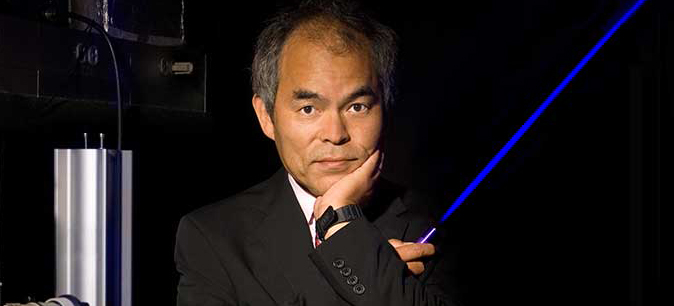UCSB’s Shuji Nakamura wins Nobel Prize in physics

Shuji Nakamura, materials professor at UC Santa Barbara, is a recipient of the 2014 Nobel Prize in physics. Randall Lamb photo
The 2014 Nobel Prize in physics has been awarded to Shuji Nakamura, professor of materials and of electrical and computer engineering at the University of California, Santa Barbara, and two others.
The prize is for the invention of efficient blue light-emitting diodes, which has enabled bright and energy-saving white light sources, and is shared with Isamu Akasaki of Meijo University and Nagoya University, Japan; and Hiroshi Amano of Nagoya University.
According to the Royal Swedish Academy of Sciences, when Nakamura, Akasaki and Amono “produced bright blue light beams from their semiconductors in the early 1990s, they triggered a fundamental transformation of lighting technology. Red and green diodes had been around for a long time, but without blue light, white lamps could not be created. Despite considerable efforts, both in the scientific community and in industry, the blue LED had remained a challenge for three decades.”
The LED lamp “holds great promise for increasing the quality of life for over 1.5 billion people around the world who lack access to electricity grids,” the academy continued.
Nakamura, who is also co-director of the campus’s Solid State Lighting & Energy Electronics Center, is the sixth faculty member at UC Santa Barbara to have won a Nobel Prize since 1998. UCSB alumna Carol Greider received the 2009 Nobel Prize in Physiology or Medicine.
“I am very honored to receive the Nobel Prize from the Royal Swedish Academy of Science for my invention of the blue LED and blue laser,” said Nakamura. “It is very satisfying to see that my dream of LED lighting has become a reality. I hope that energy-efficient LED light bulbs will help reduce energy use and lower the cost of lighting worldwide.”


